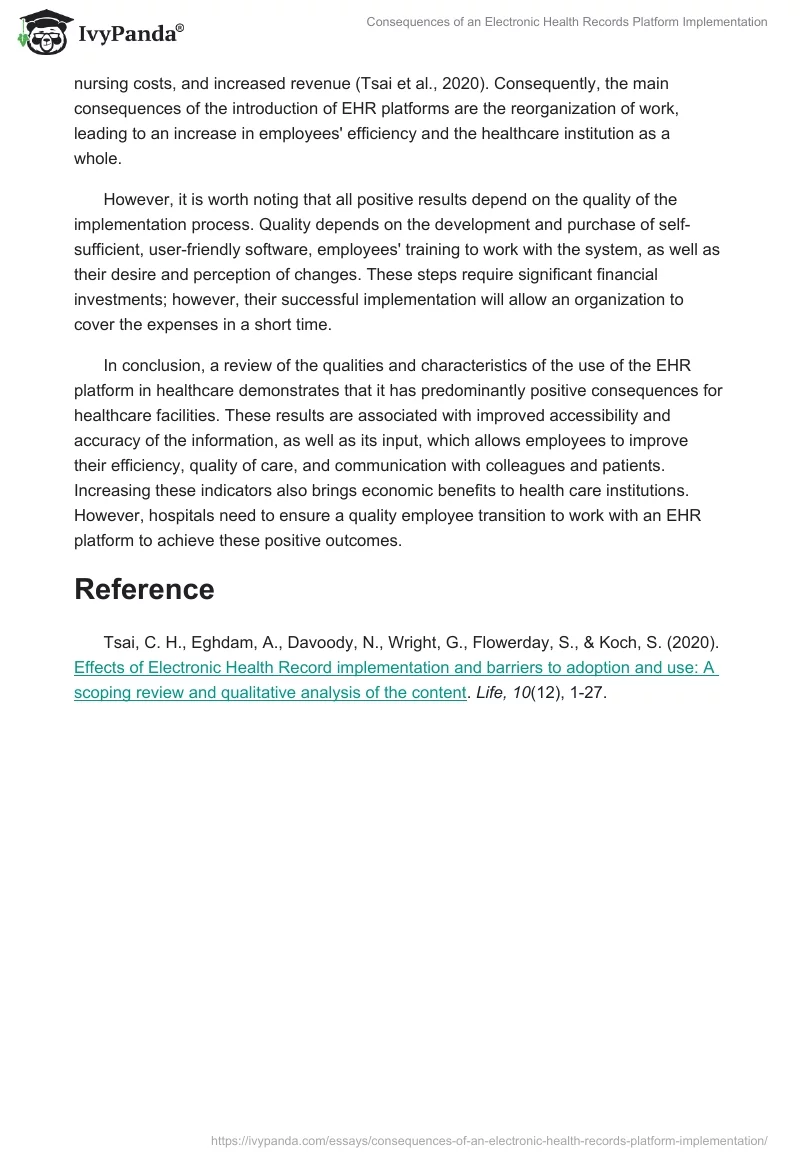Technology is a part of almost every industry as it makes work and life easier for people due to automatization of some processes and additional functions. The implementation of Electronic Health Records (EHR) platforms in hospitals and clinics also aims to improve staff efficiency, ease of access to data, and patient care quality. However, in practice, Electronic Health Records can bring both positive and negative consequences, depending on their quality and skills of professionals.
The use of EHR platforms has many benefits for healthcare professionals. First, EHR increases doctors’ and nurses’ efficiency, reduces their workload, and improves communication, which is associated with the ease of searching and sharing information in electronic systems (Tsai et al., 2020). For example, the system often has fields required for filling, templates, reference values, as well as the ability to leave additional information for colleagues or a chat for communication between professionals. Consequently, the nurse or doctor saves time filling out all the details and searching for data and is also less likely to make mistakes. However, efficiency, workload, communication, and patient safety can also deteriorate, as shown by a systematic study (Tsai et al., 2020). However, the most common causes of such decrease are an inconvenience in using the system or poor computer skills of staff that complicate their work, limit the use of functions, and lead to stress. Consequently, if facilities apply quality software and train employees, the use of EHR is mainly beneficial for healthcare professionals.
Moreover, EHR platforms also benefit the organization’s operations and patient care. First, the employee benefits described can also be used to work with patients. For example, a doctor or nurse can send detailed information on diagnosis and treatment to a patient, as well as use the EHR platform chat to answer questions and save time for consultation (Tsai et al., 2020). In addition, improved accuracy, accessibility, and organized data storage helps clinicians more fully and accurately analyze a patient’s situation and propose a suitable solution, which reduces the likelihood of errors. These advantages of working with the system also have economic benefits for hospitals and clinics associated with increased productivity, reduced administrative, documentary, nursing costs, and increased revenue (Tsai et al., 2020). Consequently, the main consequences of the introduction of EHR platforms are the reorganization of work, leading to an increase in employees’ efficiency and the healthcare institution as a whole.
However, it is worth noting that all positive results depend on the quality of the implementation process. Quality depends on the development and purchase of self-sufficient, user-friendly software, employees’ training to work with the system, as well as their desire and perception of changes. These steps require significant financial investments; however, their successful implementation will allow an organization to cover the expenses in a short time.
In conclusion, a review of the qualities and characteristics of the use of the EHR platform in healthcare demonstrates that it has predominantly positive consequences for healthcare facilities. These results are associated with improved accessibility and accuracy of the information, as well as its input, which allows employees to improve their efficiency, quality of care, and communication with colleagues and patients. Increasing these indicators also brings economic benefits to health care institutions. However, hospitals need to ensure a quality employee transition to work with an EHR platform to achieve these positive outcomes.
Reference
Tsai, C. H., Eghdam, A., Davoody, N., Wright, G., Flowerday, S., & Koch, S. (2020). Effects of Electronic Health Record implementation and barriers to adoption and use: A scoping review and qualitative analysis of the content. Life, 10(12), 1-27.


